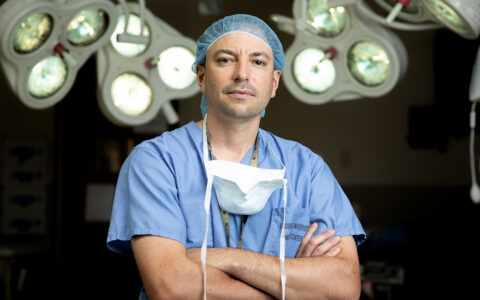Physician scientists are an endangered species. Despite their critical role in the medical workforce, many M.D./Ph.D. trainees are falling off the path. Matriculation rates for M.D./Ph.D. programs have stalled nationwide, and while program attrition is variable, one study found nearly one in three enrollees never earn both degrees.
“For the past 40 years there have been ongoing national discussions emphasizing the need to continue supporting physician scientists throughout the course of their training,” said Christopher S. Williams, M.D., associate dean of physician scientist education and training at Vanderbilt University Medical Center. “The training path is long and there are numerous pressures contributing to attrition from this career choice.
In response, top institutions have devised infrastructure to better maintain the pipeline and support physician scientist careers. Williams recently joined other seasoned advisors outlining programmatic approaches in the Journal of Clinical Investigation (JCI).
“The training path is long and there are numerous pressures contributing to attrition.”
Three Adaptable Models
The program leaders describe three distinct models:
- Integrated (Vanderbilt University): physician scientist training communities are integrated and coordinated across all career stages, including pre-doctoral (MSTP), post-doctoral (PSTP: Patrick Hu, M.D. in medicine, Daniel Moore, M.D. in pediatrics), and junior faculty (Translational Bridge and Newman Society: Kathy Hartmann, M.D.)
- Centralized (Duke University): students across departments participate in core programming, leveraging institution-wide resources
- Resident-centered (Massachusetts General Hospital): students receive individualized mentorship within specialties, fostering longitudinal support throughout residency training
The JCI paper also describes funding mechanisms appropriate for each model, and how they apply across a training timeline. The authors note the models are not mutually exclusive, but complementary, and features can be adapted to existing infrastructures.
Support Structures
“Depending on the institution and resources, program structures can look quite different,” Williams said. “A common feature is building community at each training phase.”
This starts with representation, Williams explained. Physician scientists incorporated into advisory and leadership positions within each school are critical role models for students embarking on the path. They can also help set priorities for medical education and research training that are sensitive to the needs of M.D./Ph.Ds. at all levels.
Peer-to-peer mentoring is also included in each model and is invaluable, according to physician scientist working groups led by Williams.
Programs can catalyze “intergenerational” relationships by supporting societies that include students, fellows, junior faculty and alumni. Vertical integration can also aid in in-house faculty recruitment. “These different stages of trainees need to be interacting with each other,” Williams said. “It welds the community together and builds hard and soft skills.”
Specific program features such as structured curricula and protected (and immersive) research time, coupled with appropriate financial support, also encourage trainee success. “Benefits such as salary supplementation and child care disincentivize moonlighting and reduce the pressure to pursue careers in private practice,” wrote the authors.
Distinct Role
Numerous factors contribute to physician scientist attrition, including the length and cost of training, declining funding opportunities and compensation disparities with a private practice, Williams said. Yet those who continue down the physician scientist career path make some of the largest contributions – the 2019 Nobel Prize winners in Physiology or Medicine were all physician scientists, as one example.
“Physician scientists – via their interactions with patients and engagement in discovery efforts – are uniquely positioned to identify therapeutic and diagnostic gaps,” Williams said, “and then facilitate the research that leads to discoveries directly impacting human health.”
Williams and his fellow physician scientists are calling for nationwide databases to better monitor the M.D./Ph.D. pipeline. They are interested in capturing distinct physician scientist data points, such as successful K-to-R grant transitions, percent effort committed to research in each training phase, and rates of physician burnout. Knowing the scope of challenges could help programs better support M.D./Ph.Ds.





